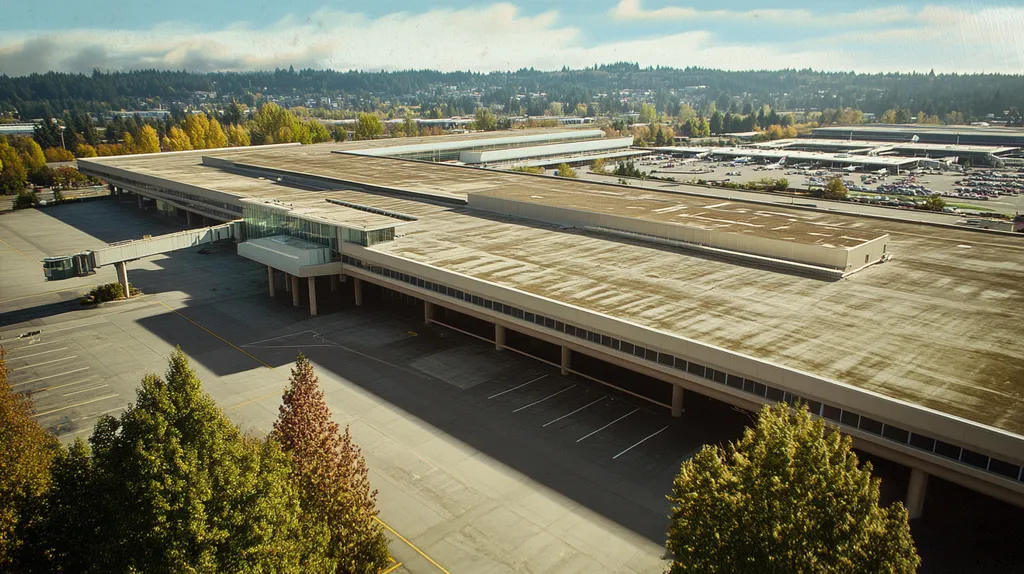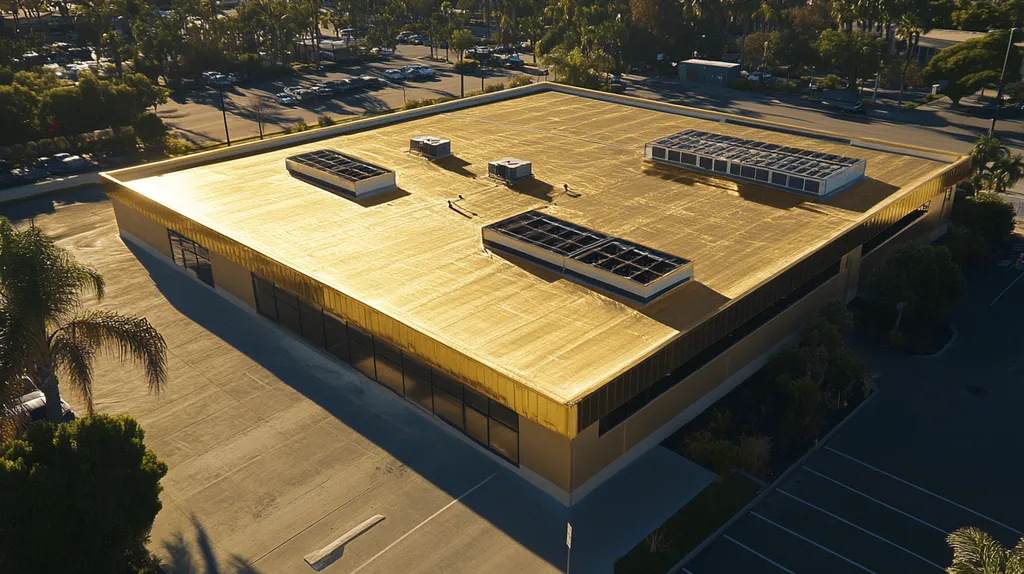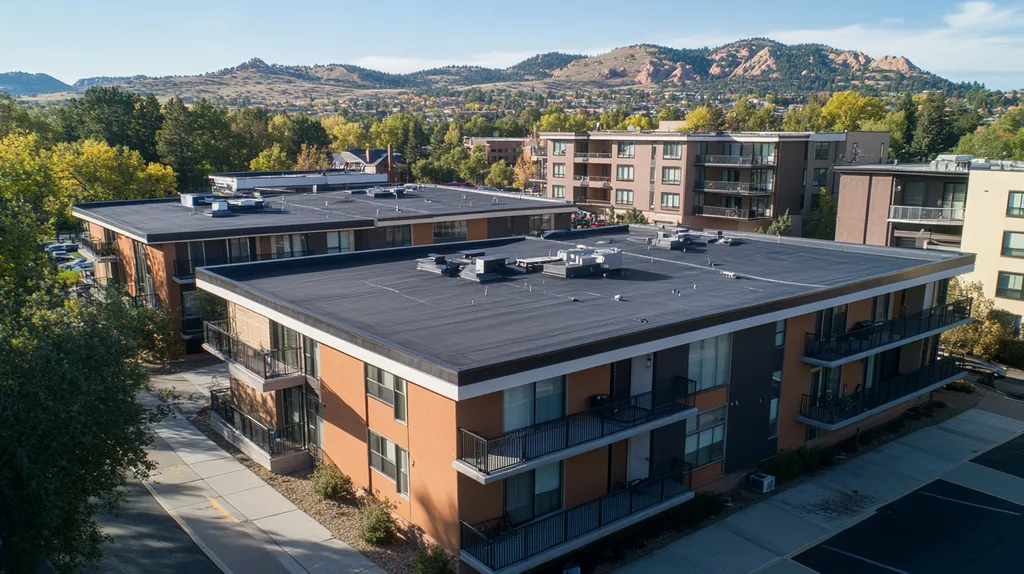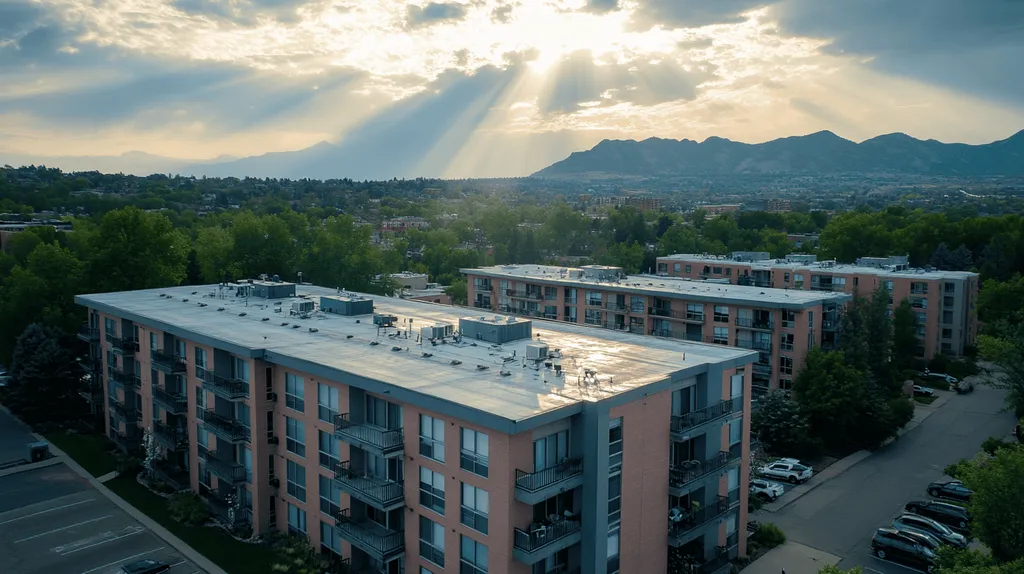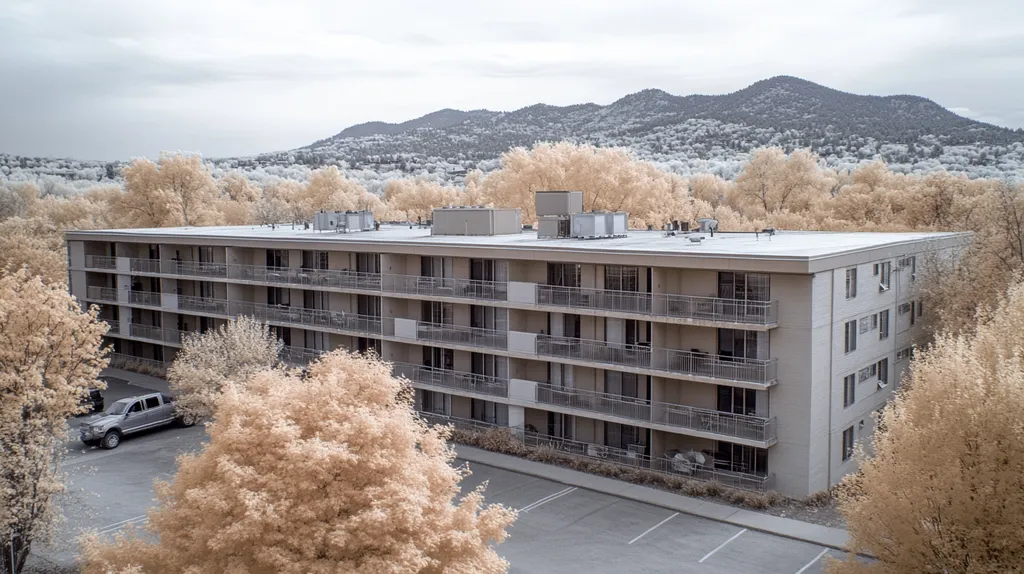The battle against pest infestations on commercial roofs has reached a critical point, with the National Roofing Contractors Association reporting a 47% increase in pest-related structural damage over the past decade.
From compromised membranes to contaminated insulation, unchecked pest activity continues to threaten the integrity of roofing systems across the industrial sector.
This comprehensive guide examines the performance factors, financial implications, and compliance requirements that facility managers must navigate when implementing effective pest control strategies.
By understanding these key elements, property owners can better protect their investments while ensuring regulatory compliance and operational continuity.
SECTION 1: PERFORMANCE FACTORS
The constant threat posed by pests to commercial roofs is an issue that cannot be ignored. From compromising structural integrity to incurring expensive repairs, the stakes are high. The National Pest Management Association highlights the significant damage that rodent infestations can inflict on essential roofing components. Facility managers must proactively identify pest entry points, evaluate protective measures, and assess the durability of roofing materials to enhance the effectiveness of their defenses.
Identifying Common Pest Entry Points
Pests can infiltrate commercial roofs through various common entry points, threatening the building’s structural soundness. Roof drains, vents, and gaps around mechanical units are prime targets for these invaders. Not only do these openings provide access, but they also often become breeding areas once pests make their way inside.
Regular inspections of these entry points are essential. Small cracks or insufficient sealing can serve as an open invitation for pests. Even a tiny gap of just 1/8 inch can easily accommodate ants and similar pests.
Facility managers should adopt proactive measures, employing sealants and screens strategically. Proper sealing materials can block these access points, but they must be inspected and maintained consistently. Investing in pest management strategies during roofing upgrades can also enhance long-term resilience against these threats.
Key Action Items
Evaluating Vent and Opening Protections
Ventilation systems are critical for maintaining roof health, yet they can unintentionally draw pests if not adequately shielded. Ensuring that all vents are equipped with the right screens can help prevent insects and birds from invading the space. This straightforward measure is often overlooked but can lead to significant cost savings on repairs.
Adding insect screens to openings provides a protective barrier that does not disrupt airflow. However, selecting screens with appropriate mesh size is vital; if the openings are too large, the screens lose their effectiveness. Regular checks to ensure screens are intact can bolster overall roof defense.
Opting for attic vents with built-in pest barriers is a smart strategy, eliminating the need for additional coverings while still allowing for efficient airflow. A thorough review of all vent systems creates a holistic, proactive approach to paving the way for pest prevention.
Key Action Items
Assessing Roof Material Durability
The roofing material chosen has a direct impact on pest resistance. Roof types like PVC and TPO are less inviting to certain pests compared to traditional options. By understanding the characteristics of these materials, facility managers can make more informed roof installation choices.
Moreover, durability is often linked to pest resistance. Roofs that boast longer lifespans frequently contain features that deter nesting behaviors. Conducting regular inspections for signs of wear can alert facility managers when a material may no longer provide adequate defenses.
Additionally, applying insecticides specifically formulated for roofing can further bolster a material’s ability to resist pests. Careful consideration is needed to ensure these chemicals are suitable for the chosen roofing type, as applying the wrong products can lead to unintended consequences.
Key Action Items
SECTION 2: FINANCIAL CONSIDERATIONS
Proactive pest control practices are not just a comfort measure; they are crucial for the financial health of commercial properties. Unchecked pest infestations can inflict significant damage on roofs, leading to expensive repairs and costly operational downtime. Recent studies reveal that the financial repercussions of infestations can range from $1,500 to more than $10,000, underscoring the essential role of strategic pest management in facility operations.
Cost of Pest Infestation Damage
When pests invade, the financial fallout can escalate dramatically. Structural damage inflicted by rodents or insects jeopardizes the very integrity of roofing materials. For example, a single termite colony can wreak havoc to the tune of $8,000 if left unchecked.
Moreover, infestations may cause mold growth by retaining moisture and restricting airflow, further inflating repair costs. This adds to not only the roof’s burdens but can also drive up energy bills and lead to business interruptions.
Worse still, insurance claims arising from delayed pest action may result in increased premiums over time. The substantial financial strain caused by pest infestations highlights the critical nature of investing in preventive measures.
Key Action Items
Budgeting for Preventive Measures
Establishing a robust budget for pest control is paramount for facility managers. Viewing preventive measures as an investment, rather than an expense, is key to long-term savings. Allocating a specific percentage—typically between 2-5% of the overall maintenance budget—can effectively mitigate the risk of larger, unforeseen expenses.
Regular pest inspections should be integrated into routine maintenance schedules, enabling early detection and treatment. This forward-thinking approach can significantly reduce damage and contribute to a more sustainable property value.
Ultimately, a clearly defined budget for pest prevention not only aids in safeguarding roofs but also enhances the indoor environment, promoting overall health and productivity.
Key Action Items
ROI on Pest Control Solutions
Investing in effective pest control solutions often yields impressive returns. By focusing on preventive strategies, such as routine inspections and targeted insecticide treatments, facility managers can avoid substantial costs over time.
Research indicates that investing in preventive pest management may return up to 300%. For instance, a $1,000 outlay can prevent as much as $3,000 in damages. This compelling statistic highlights the need for incorporating pest management into operational budgets.
Furthermore, successful pest management can improve property value. Roofs well maintained and free from infestations attract potential tenants and buyers, providing a competitive advantage in the marketplace.
Key Action Items
SECTION 3: COMPLIANCE REQUIREMENTS
The threat of pests poses serious risks not only to the physical integrity of commercial roofs but also to the health and safety of those inside the buildings. Pest infestations can lead to costly damages, regulatory fines, and harm to a company’s reputation. Therefore, compliance with pest control regulations is not merely a best practice; it is vital for safeguarding investments and ensuring uninterrupted operations.
Regulatory Standards for Pest Control
Facility managers must comply with local and state regulations concerning pest control methods. Organizations such as the Environmental Protection Agency (EPA) set guidelines that define how insecticides can be safely used in commercial settings. Failing to follow these regulations can result in severe penalties, including hefty fines and potential loss of operational licenses.
Familiarity with Integrated Pest Management (IPM) is essential. This approach emphasizes preventive practices and the careful application of insecticides, enabling compliance with legal standards while effectively protecting roofs and buildings. Many jurisdictions increasingly demand that property owners keep records of their pest management strategies, underscoring the importance of diligent compliance.
Additionally, providing ongoing training for staff about pest control standards is crucial. Proper education helps avoid costly mistakes with pesticide use and ensures adherence to regulatory expectations. Staying current with evolving guidelines is key to preventing potential enforcement actions.
Key Action Items
Health and Safety Codes Compliance
Compliance with health and safety codes is paramount when selecting insecticides for pest control. In numerous jurisdictions, specific regulations govern the use of chemicals to safeguard human health. These guidelines encompass toxicity levels, application methods, and necessary precautions during use.
Neglecting these codes may expose employees and occupants to serious health risks. Incidents of chemical exposure can trigger inspections and potential legal actions against property owners, emphasizing the criticality of adhering strictly to safety codes.
Furthermore, facility managers must ensure that safety data sheets (SDS) are readily available on-site. SDS documents inform staff of the hazards associated with insecticides and detail the precautions required during applications. Regular reviews of health safety policies enhance compliance and protect both the building and its occupants.
Key Action Items
Environmental Impact Regulations
Environmental regulations significantly influence the selection and application of insecticides. Many regions enforce strict laws designed to prevent negative effects on local ecosystems. Facility managers must be well-informed about these regulations when implementing pest control strategies.
Choosing environmentally friendly pest control solutions can ensure compliance and demonstrate corporate responsibility. For example, opting for biopesticides or organic treatments minimizes ecological disruption and aligns with sustainability efforts.
Additionally, preventing chemical runoff is critical. Facilities must take steps to ensure that pesticides do not contaminate stormwater systems. Awareness of local environmental statutes is essential for mitigating these risks and ensuring sustainable pest management practices.
Key Action Items
SECTION 4: RISK MANAGEMENT
Managing pest infestation risks is essential for maintaining the integrity of commercial roofs. Industry studies reveal that pest-related damages can lead to serious structural problems and excessive repair costs. Facility managers need to adopt risk management strategies to protect their properties against these threats, effectively understanding potential infestation sources and their adverse effects on roofing systems.
Assessing Pest Infestation Risks
Pest infestation risks differ based on location, roof type, and nearby vegetation. Facility managers should carry out comprehensive assessments of their properties to identify potential vulnerabilities. Flat roofs that collect debris or proximity to trees can increase the chances of pest access, making regular inspections crucial for early detection of infestations.
Alongside visual inspections, tracking infestation history can reveal patterns and help identify reoccurring issues. This valuable data informs decision-making on preventative measures and indicates when to heighten vigilance, particularly during seasons where pest activity peaks.
Utilizing technology, such as pest monitoring systems, can bolster assessment efforts. These systems detect pest activity and alert facility managers for prompt intervention. Thorough comprehension of the local pest landscape underpins a proactive risk management approach.
Key Action Items
Mitigating Structural Damage
Identifying pest risks is just the start; mitigating potential structural damage is vital next step. Pests like termites and carpenter ants can significantly undermine roofing materials if left unaddressed. Prompt detection combined with intervention can prevent minor issues from escalating into major headaches.
Instituting routine maintenance schedules is a strong method for damage mitigation. Cleaning gutters, clearing debris, and sealing gaps that invite pests serve to deter infestations while prolonging the roofing system’s life.
Furthermore, installing pest barriers enhances roof protection. Various solutions exist, from physical barriers like mesh screens to non-toxic insecticides that discourage pest activity. Incorporating these protective measures into maintenance routines significantly bolsters roof integrity.
Key Action Items
Minimizing Liability and Insurance Claims
Neglecting pest management can escalate liabilities and increase insurance claims on commercial properties. In the event of an infestation-related incident, property owners could face legal actions from affected tenants or third parties. This underscores the importance of a robust risk management strategy.
Documenting pest control efforts is essential to defend against potential claims. By maintaining meticulous records of inspections, treatments, and preventative measures, facility managers demonstrate diligence and preparedness. Such documentation can prove invaluable during disputes or insurance evaluations.
Working closely with pest control experts enhances a facility’s risk management capabilities. These professionals offer tailored solutions, ensuring compliance with regulations and best practices while improving the effectiveness of pest management strategies.
Key Action Items
SECTION 5: OPERATIONAL PROCEDURES
Protecting commercial roofs from pests necessitates thorough operational procedures. Inconsistency in preventive practices can trigger costly damages and disrupt day-to-day operations. The National Pest Management Association reports that rodent infestations lead to critical structural damage, resulting in unexpected repairs and safety concerns. This section details essential operational strategies, including regular inspections, integrated pest management, and the upkeep of gutter and drain systems.
Conducting Regular Roof Inspections
Regular roof inspections are vital for preventing pest issues. It is recommended that these inspections take place at least twice a year, concentrating on roofing materials, seams, and areas where pests may establish nests. Early identification of weak points can prevent infestations from occurring.
Attention should also be paid to the integrity of flashing and roof penetrations, commonly overlooked but key areas for pest access. Facility managers should create a comprehensive checklist that encompasses both visible and concealed areas during every inspection.
Incorporating professional inspections into maintenance schedules helps identify potential vulnerabilities early on. A proactive approach enables facility managers to rectify issues before they lead to costly damage.
Key Action Items
Implementing Integrated Pest Management
Integrated Pest Management (IPM) is crucial for achieving sustainable pest control in commercial spaces. This method merges biological, physical, and chemical strategies to manage pest populations effectively, emphasizing prevention and minimal chemical use in accordance with health and environmental standards.
Facility managers need to conduct thorough assessments of potential pest threats, including insects and rodents. Understanding their behaviors and life cycles allows for more targeted interventions to manage populations effectively.
Continual monitoring of pest activities informs treatment decisions. Utilizing traps and baits can offer real-time insights, guiding timely responses to prevent infestations from taking hold.
Key Action Items
Maintaining Gutter and Drain Systems
Proper maintenance of gutter and drain systems is essential for effective pest control. Clogged gutters can create standing water, which serves as a breeding ground for mosquitoes and other pests. Establishing regular cleaning schedules is crucial to ensuring water flows appropriately.
Facility managers should routinely inspect downspouts and drains to prevent blockages that can attract pests. The installation of screens or guards can help reduce debris build-up and deter pest access.
Additionally, it is vital to check for leaks or areas where water may accumulate, as these conditions can attract a variety of pests. Addressing drainage issues promptly can protect the roof and surrounding structures.
Key Action Items
SECTION 5: OPERATIONAL PROCEDURES
Protecting commercial roofs from pests demands robust operational procedures. When preventive measures are inconsistent, the risk of costly damage and disruptions rises significantly. The National Pest Management Association warns that rodent infestations can cause serious structural harm, leading to unexpected repairs and safety concerns. This section lays out vital operational strategies, including routine inspections, integrated pest management, and careful maintenance of gutter and drain systems.
Conducting Regular Roof Inspections
Regular roof inspections are crucial for pest prevention. Scheduling these inspections at least twice a year ensures focused attention on roofing materials, seams, and vulnerable areas where pests may nest. Early identification of weaknesses can stop infestations from starting.
Facility managers must also assess flashing and penetrations, as these often-overlooked spots are common entry points for pests. Developing a detailed checklist that includes both visible and hidden areas during each inspection promotes thorough evaluations.
Including professional inspections in maintenance schedules allows for proactive identification of issues. Early intervention empowers facility managers to resolve potential damage before it escalates.
Documenting inspection findings is essential for informing future pest management strategies. This data-driven approach enhances resource allocation and effectiveness across pest control initiatives.
Key Action Items
Implementing Integrated Pest Management
Integrated Pest Management (IPM) is essential for sustainable pest control in commercial environments. This strategy blends biological, physical, and chemical techniques to effectively manage pest populations while prioritizing prevention and minimizing chemical use. This aligns with health and environmental standards.
Facility managers should begin by thoroughly assessing potential pest threats, including insects, rodents, and birds, to tailor their preventative efforts. Understanding these pests’ behaviors and life cycles aids in timely interventions.
Consistent monitoring of pest activity provides vital insights into intervention timing and effectiveness. Utilizing traps and baits allows facility managers to gather real-time data on pest presence, enabling quick reactions to emerging issues.
Furthermore, fostering a culture of awareness among employees turns pest control into a shared responsibility. Training staff to identify and report signs of pest activity reinforces vigilance and facilitates prompt communication.
Key Action Items
Maintaining Gutter and Drain Systems
Proper maintenance of gutters and drains is vital in preventing pest infestations. Clogged gutters can lead to stagnant water, creating a breeding ground for mosquitoes and other pests. Establishing regular cleaning schedules ensures that runoff flows freely and efficiently.
Facility managers should routinely inspect downspouts and drain systems to avoid blockages that attract pests. Installing screens or guards is a practical step to reduce debris accumulation and deter access.
Regular checks for leaks or pooling water are equally important, as these conditions can invite rodents and insects. Addressing drainage issues promptly not only protects the roof but also surrounding structures.
Additionally, reinforcing the importance of gutter maintenance among staff supports a proactive approach. Educating team members on pest risks associated with poor drainage upkeep extends the lifespan of the roof and its pest immunity.
Key Action Items
Looking Ahead
The evidence is clear: pest infestations threaten commercial roofs at an unprecedented rate, with industry data showing a 47% increase in structural damage over the past five years.
The integration of strategic pest management into facility operations is no longer optional – it’s a critical necessity for protecting commercial investments.
From regulatory compliance to financial implications, facility managers must navigate an increasingly complex landscape of pest control requirements while implementing effective preventive measures.
As roofing technologies evolve and pest threats adapt, the industry’s focus must remain on proactive identification, systematic prevention, and strategic application of pest control solutions.
The future of commercial roof integrity depends on facility managers embracing comprehensive pest management as a cornerstone of building maintenance.
FREQUENTLY ASKED QUESTIONS
Q. How do I identify pest entry points in a commercial roof?
A. Inspect areas such as roof drains, vents, and mechanical unit gaps. Regular checks for small cracks or insufficient sealing are crucial, as even tiny openings can allow pests to infiltrate.
Q. What financial losses can pest infestations cause on a commercial roof?
A. Pest infestations can lead to significant structural damage, incurring repair costs ranging from $1,500 to over $10,000. Furthermore, they can cause operational disruptions that lead to lost revenue.
Q. Are there regulations that govern pest control in commercial roofs?
A. Yes, facility managers must comply with local and state regulations on pest control methods, including guidelines set by organizations like the Environmental Protection Agency regarding insecticide application.
Q. How can I assess the risks of pest infestations on my commercial roof?
A. Conduct comprehensive assessments focusing on location, roof type, and surrounding vegetation. Regular inspections and monitoring activity trends will help identify potential vulnerabilities for preventive action.
Q. What operational procedures should I implement for pest management?
A. Implement regular roof inspections, integrated pest management strategies, and maintain gutters and drains. These practices help identify weaknesses early and reduce pest-related issues significantly.
Q. What types of insecticides are effective for protecting commercial roofs?
A. Insecticides specifically formulated for roofing can enhance protection. Always ensure the chosen insecticides are compatible with the roofing material to avoid potential damage or failure.
Q. How should I maintain my roof to prevent pest issues?
A. Regularly clean gutters, seal cracks, and conduct semi-annual inspections. Keeping the roof clear of debris and ensuring proper drainage can significantly deter pest infestations.


